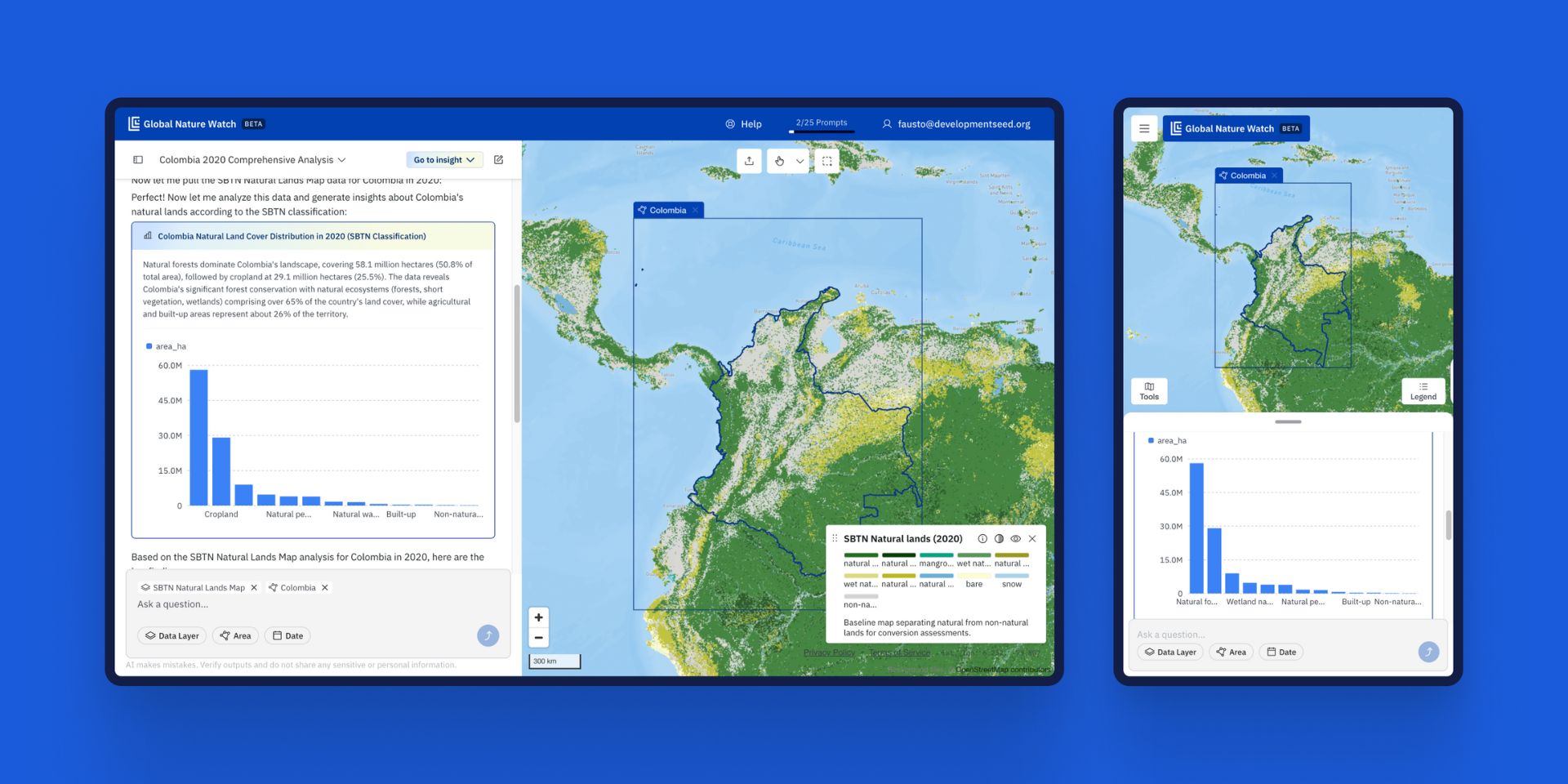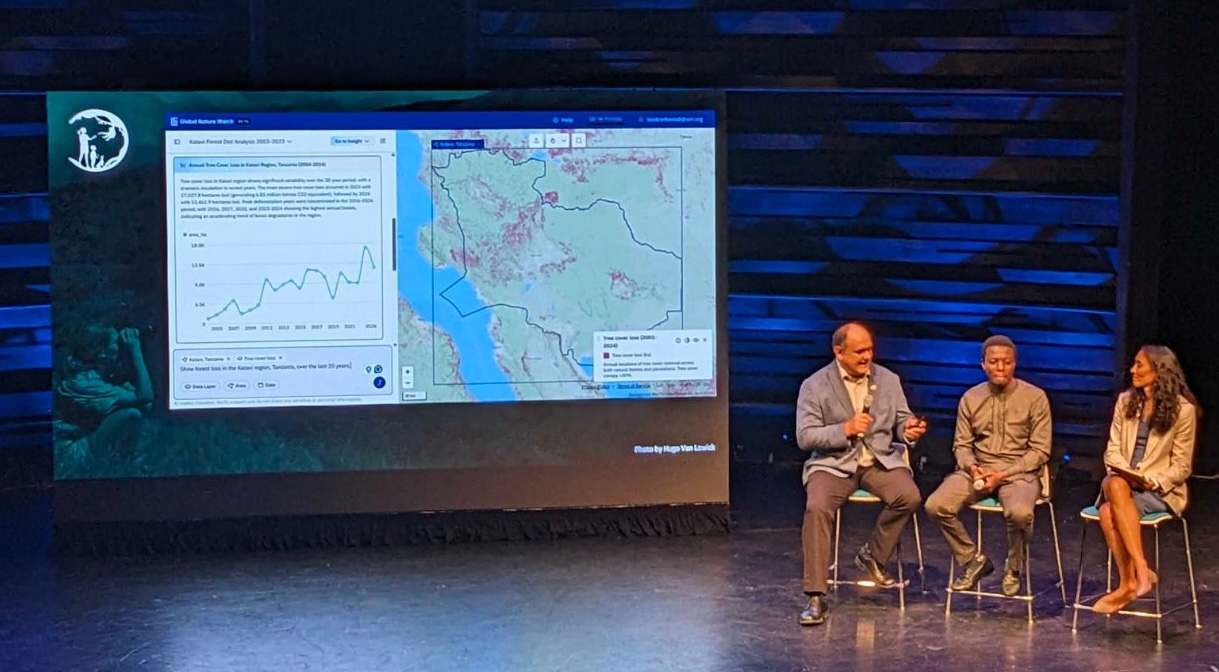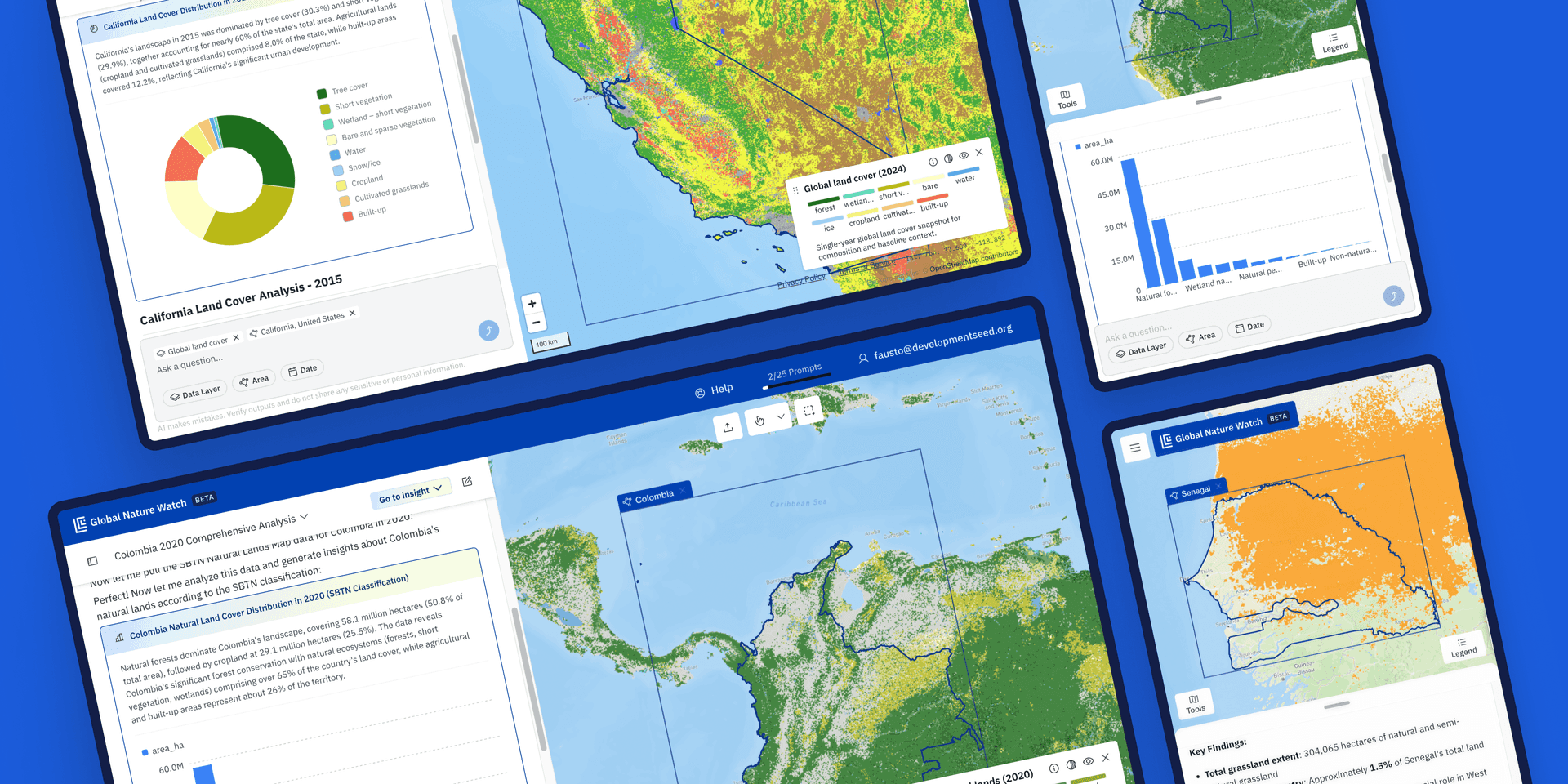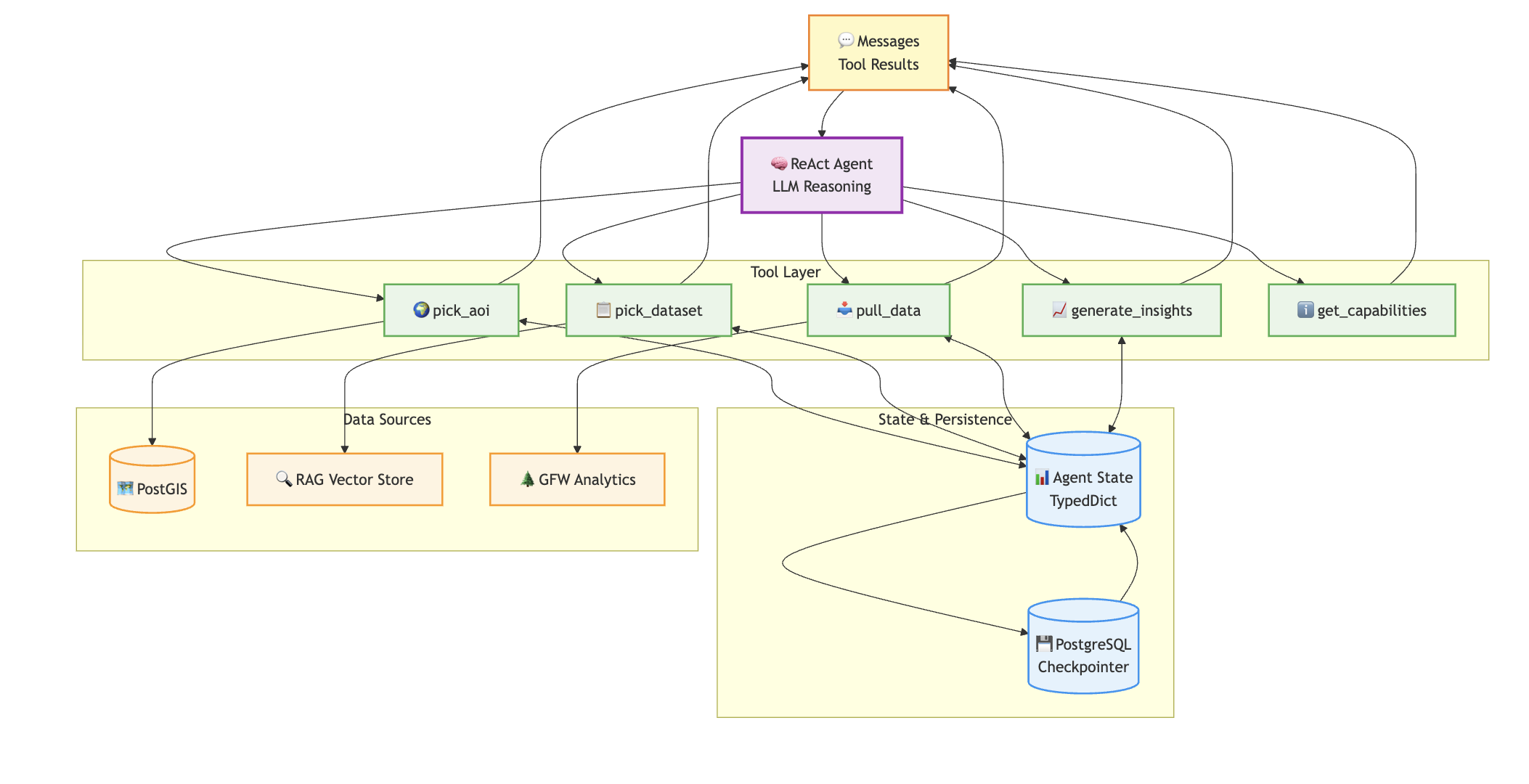AI for Environmental Intelligence and Monitoring
Overview
Global Nature Watch is a new frontier in planetary intelligence, developed with the Land & Carbon Lab – an initiative convened by World Resources Institute and Bezos Earth Fund. The platform builds on more than 80 peer-reviewed datasets produced over five years by 200+ scientists. It expands monitoring beyond forests to cover grasslands, wetlands, croplands, pastures, and carbon flux. Through an intuitive chat-and-map interface, users can ask plain-language questions and receive answers with maps, charts, and context. The open-source system is being launched in a phased beta release to ensure quality and reliability.
Challenge
Environmental data is increasingly abundant but often hard to use. Many of the people who most need monitoring tools—local organizations, governments, Indigenous groups, and finance institutions—lack the capacity to navigate technical systems or interpret raw datasets. Critical ecosystems outside forests have been especially underserved, leaving gaps in global monitoring.
Outcome
Global Nature Watch bridges these gaps by pairing trusted Land & Carbon Lab and Global Forest Watch data with an AI assistant that interprets plain-language questions, executes geospatial analysis, and returns clear, verifiable results. It lowers barriers to entry, enables multilingual use, and delivers actionable insights for anyone working to protect, restore, or sustainably manage land.

Built for web and mobile, Global Nature Watch is AI for Environmental intelligence and monitoring.
Monitoring is the foundation of effective climate and nature action. Policies and restoration efforts depend on knowing what is happening where. Until now, much of the world’s land change data has been difficult to access or apply outside research and technical circles.
Global Nature Watch helps democratize monitoring. Civil society organizations can use it to document threats to biodiversity. Governments can rely on it to guide enforcement and land-use planning. Indigenous Peoples and local communities can access data in their own language to defend territories and strengthen stewardship. Financial institutions can draw on insights to design nature-positive lending. Researchers and practitioners can analyze performance and accelerate conservation and restoration.
For example, Indigenous leaders in the Philippines used GNW carbon data to demonstrate the immense climate value of their ancestral territories. That evidence directly contributed to provincial laws recognizing Indigenous land rights.
By making high-quality monitoring available to all, the platform expands who can act on critical environmental intelligence.
How it works
At the core of Global Nature Watch is an AI system with an agent that translates simple questions into structured geospatial workflows. A user might ask, “How much grassland was lost in Argentina during the last global beef price boom?” and the system will identify the place and timeframe, select the right datasets, and generate a chart and map grounded in real satellite data.
The platform’s technical foundation includes:
- Environmental datasets from Land & Carbon Lab and Global Forest Watch that are peer-reviewed.
- Data services built using eoAPI, and STAC.
- Agentic systems built using LangChain platform, backed by high-throughput Large Language Models from Google and Anthropic.
- Easy to use frontend interface built using Next.js.
This architecture makes Global Nature Watch powerful but also responsible: performance is monitored continuously, user feedback informs refinement, and outputs are tied to open, peer-reviewed datasets that anyone can trace.
In Action
The data available in Global Nature Watch is already showing how accessible monitoring can drive real-world outcomes. Early users are applying it to demonstrate the carbon and biodiversity value of landscapes, building stronger cases for conservation and recognition of land rights. Others are using it to track the performance of restoration efforts, moving from expensive field surveys to consistent, open-source monitoring at scale. In agriculture and finance, the data is helping stakeholders design more sustainable land management and lending practices based on credible grassland and pasture data. And community groups have used this data to strengthen enforcement efforts, using timely insights to detect and respond to illegal activities. Global Nature Watch makes these types of impacts faster, easier, and possible for more ecosystems.
These examples illustrate how governments, NGOs, researchers, and local organizations alike can put trusted data to work for better stewardship of ecosystems.

Global Nature Watch puts trusted data into the hands of impact-makers around the world.
Partnering for Impact
Development Seed partnered with Land & Carbon Lab to design, prototype, and launch Global Nature Watch. Our work focused on integrating AI with cloud-native geospatial infrastructure to create an open, reliable, and intuitive monitoring system.
We architected the agent workflows that connects language models to deterministic geospatial tools, ensuring results are rooted in validated data. We designed the conversational interface that makes complex monitoring approachable for non-technical users. We built the system’s API and visualization stack to handle global-scale data efficiently while safeguarding cost and performance.
We also collaborated closely with Land & Carbon Labl to embed transparency and evaluation into the platform from the start, establishing a framework that tests outputs against expected results and surfaces uncertainty where it exists. This responsible AI approach ensures that Global Nature Watch is not only innovative but also trustworthy.
Related content
More for you
Have a challenging project that could use our help?
Let's connect
We'd love to hear from you.

